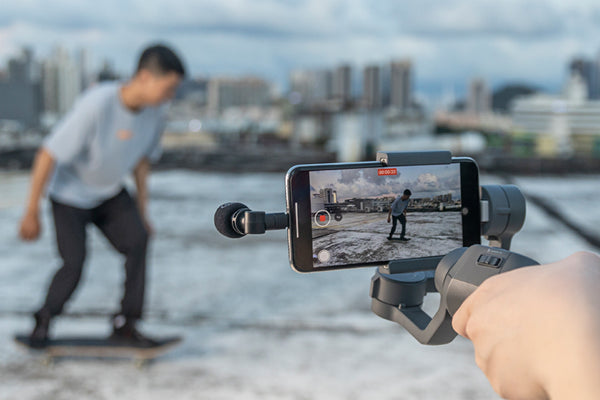When it comes to audio equipment, one of the essential tools any sound recordist should have in their arsenal is a Lavalier microphone. Read on to learn more about it.
What Is a Lavalier Microphone?
The lavalier mic, commonly referred to as a lapel or tie-clip mic, is a small, lightweight device worn on the lapel, shirt front, or blouse of a person to record audio. It is often used in television production to capture the natural sound of a person’s vocals in scenarios where a boom mic or traditional handheld microphone would be either difficult or inconvenient to use.
These mics are very small in size and lightweight, making them perfect for speech applications. They are also often relatively inexpensive compared to other microphone types, making them great for budgeting production costs.
Many Lavalier mics are also designed to be wireless so that no cables are required to connect them to the recording device. This offers great flexibility of placement and eliminates the possibility of unwanted noise from a mounted miking cable. The most common connector on the market is the 3.5mm connector which works for both wired and wireless setups. You also have the option of a mini XLR, which is a thicker and more durable connector than the 3.5mm and is often found on more expensive professional-grade connections.

Pros and cons of Lav Mics
Despite their excellent qualities, there are some drawbacks to using lav mics that you should be aware of. Here are the pros and cons of using lav mics when recording audio for videos.
Pros
- Small and Discreet: Lav mics can be attached directly to your subject's clothing which makes them incredibly discreet. This makes it ideal for shooting documentary-style interviews or in any situation where you need clean audio without having a large boom mic in the frame.
- Highly Portable: Lav mics are small, light, and highly portable, making them ideal for shooting on the go or in locations with limited space. All you need is the mic, a battery, and a recorder and you're good to go.
- Good Sound Quality: Lav mics offer good sound quality without too much additional noise. This makes them ideal for recorded dialogue, such as interviews or scripted voice-over work.
Cons
- Not Good in Noisy Environments: Lav mics are not designed to pick up ambient sound, so they're not ideal for recording in noisy environments. Background noise can easily drown out the audio recorded with the mic, making it unusable.
- Limited Directional Recording: Lav mics are limited in terms of directional recording. They capture sound from the front, meaning you can’t record different sounds from other directions. This can make them unsuitable for certain shooting scenarios.
- Expensive: Lav mics are usually more expensive than other types of mics, which can make them prohibitively expensive for those on a budget. Overall, lav mics are great pieces of audio equipment for recording clean, powerful audio in many situations. Just be aware of the drawbacks so you can make the right choice for your project.
How Does a Lavalier Microphone Work?
A lavalier microphone, also known as a lapel mic, is a popular type of microphone used to capture speech in a variety of audio recording scenarios. Often seen clipped onto the lapel of corporate presenters, television talent, and theatrical actors, these microphones are popular for their small form factor, ease of use, and excellent sound quality.
This microphone typically utilizes a small capsule that gathers sound from the immediate area within centimeters of the microphone and sends it over a cable to an external sound mixer, preamplifier, or recording device. It also has a small ‘boom arm’ that is generally attached to clothing and points the microphone towards the speaker’s mouth.
The magnetic field generated by the capsule reacts to the motion of the diaphragm, and this creates a signal in the form of a modulated electrical current. This current runs through the cables and is then amplified so that it can be recorded or transmitted.

Tips for Using a Lavalier Microphone
These days, many people are searching for advice about using a lavalier microphone. Whether you are recording an interview or a podcast, this type of microphone is incredibly helpful for capturing clear and vibrant audio. This guide provides helpful tips on how to use a Lavalier microphone correctly and effectively.
1. Choose the Right Microphone
When searching for a lavalier microphone, it’s important to consider the quality and features. Make sure to look for microphones that offer a secure fit, good sound isolation, and plenty of connection options. Remember, you get what you pay for—so, invest in a quality piece of equipment to get the best performance.
2. Secure the Microphone
No matter which type of Lavalier microphone you choose, you’ll need to ensure it is securely fastened in place. This is especially important if you’re moving about or if others are sharing the microphone. Clip lavaliers often come with clothing clips, windscreens and other securing options to keep the microphone in place.
3. Gauge the Volume
Before recording, it’s important to know at what levels the microphone will pick up sound. Adjust the recording level accordingly to ensure you record the ideal volume. For example, if the person talking is quite close to the microphone, you may need to lower the recording level.
4. Avoid Background Noise
When using a lavalier microphone outside, wind noise is your worst enemy. To minimize this, avoid outdoor areas with a lot of wind, or use a windscreen. This is usually a piece of fabric designed to protect the microphone from wind interference. Groups that feature multiple speakers speaking near each other may need to use a foam pop filter to reduce mouth noises.
5. Choose the Right Cable Length
When using a lavalier microphone, the cable length should be taken into consideration. If it is too long, it can cause cable noise interference while also being harder to manage during the recording session. Shorter cables give you more flexibility to maneuver while also reducing interference.
The Best Lavalier Microphones
Important features to consider when shopping for lav mics include omnidirectional, cardioid and stereo-polar patterns; noise-cancellation capabilities; a lightweight, adjustable design; and a long cable length. Shure and Sennheiser are two of the most established Lavalier mic makers, and their products provide excellent sound quality. The latest offerings from Rode, Audio-Technica, and AKG also offer impressive quality.

